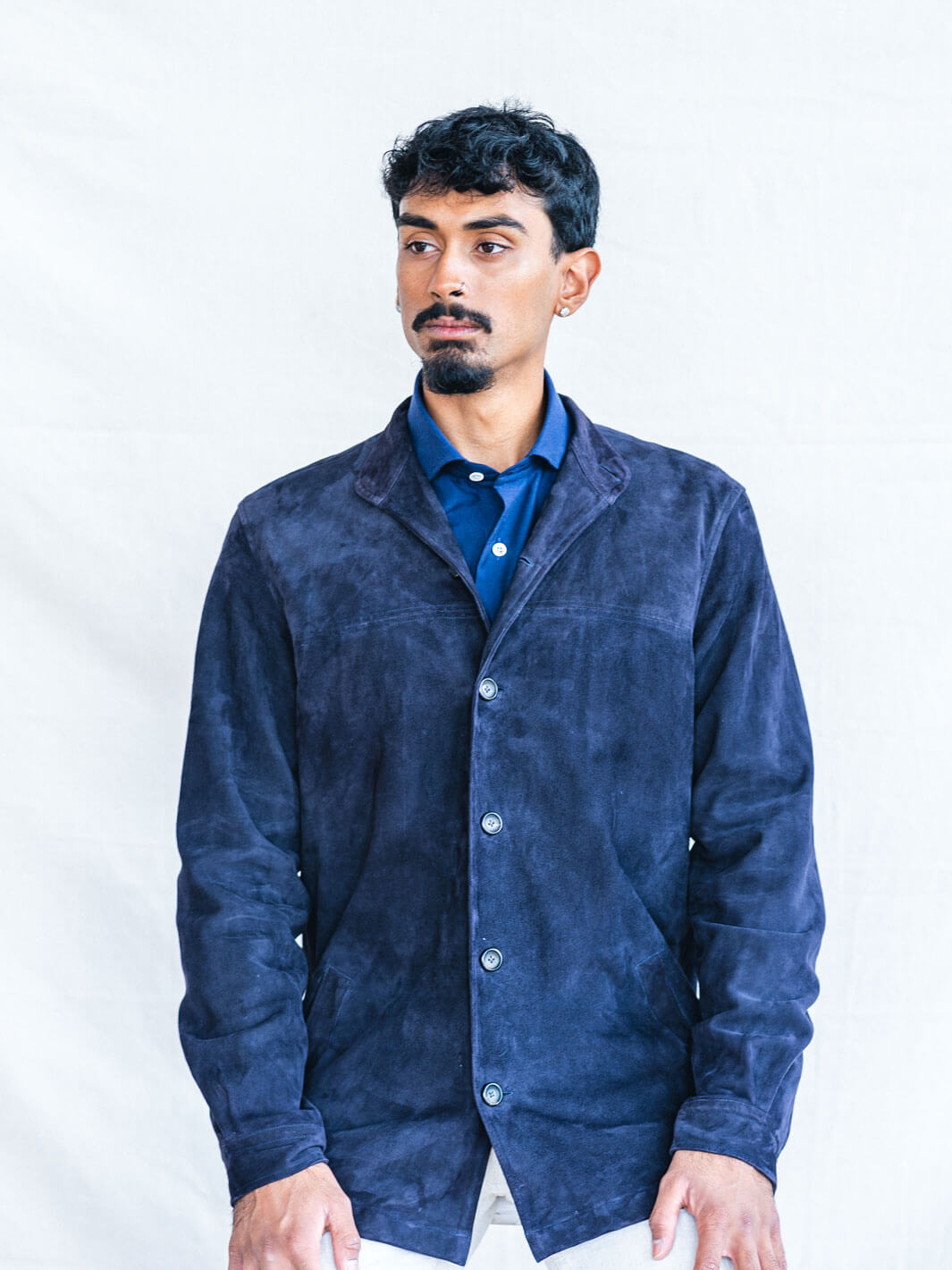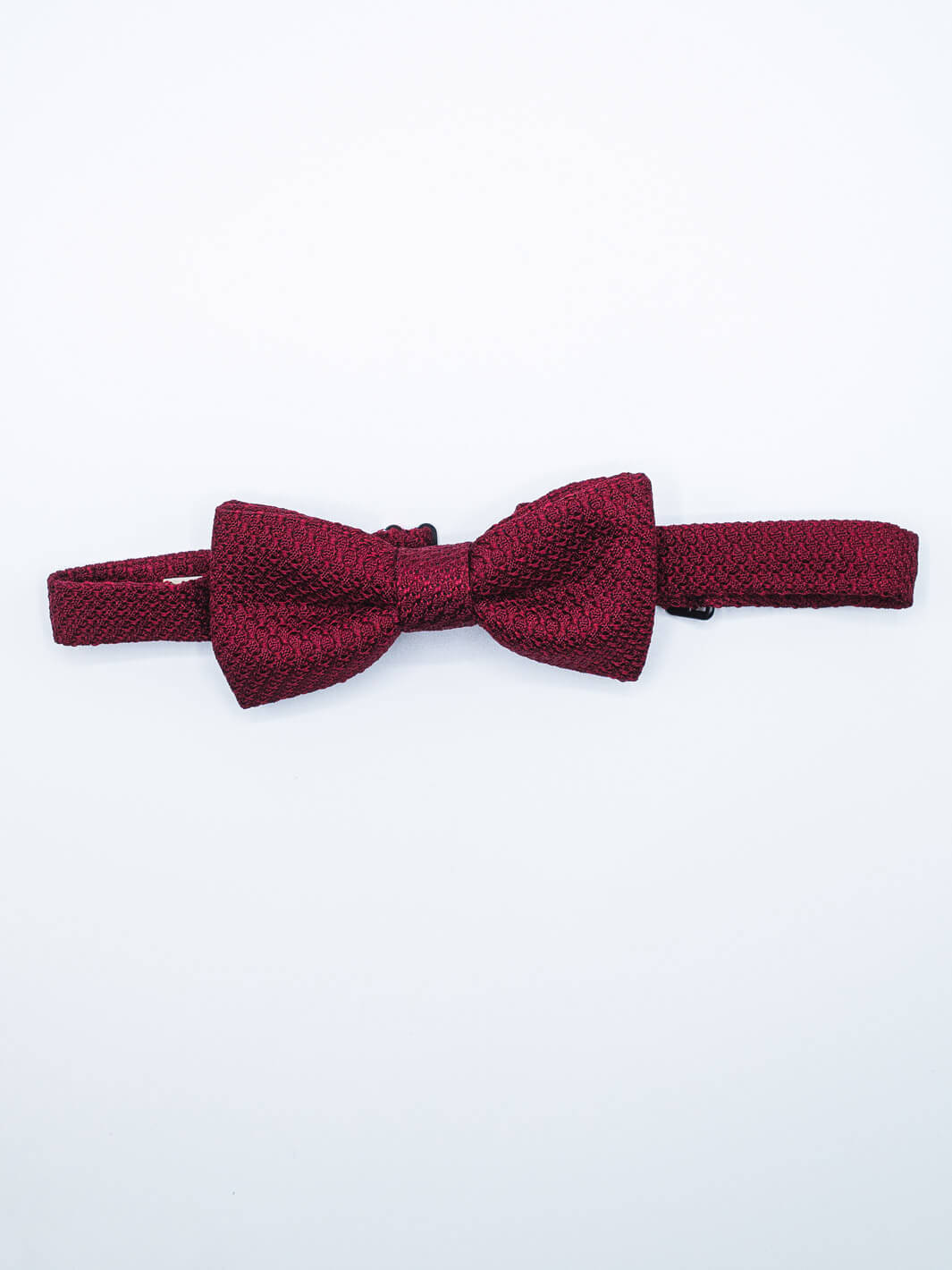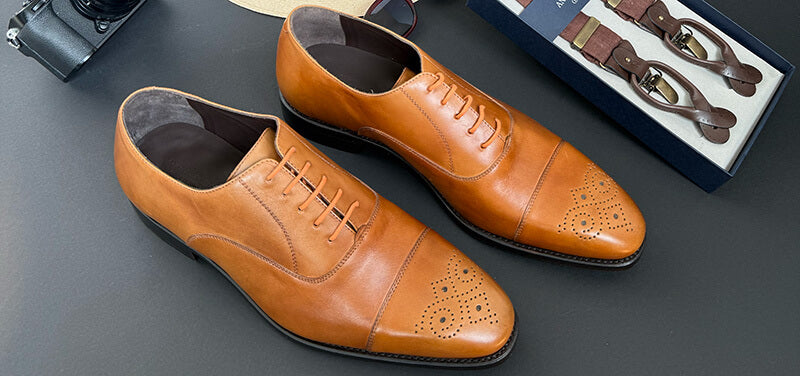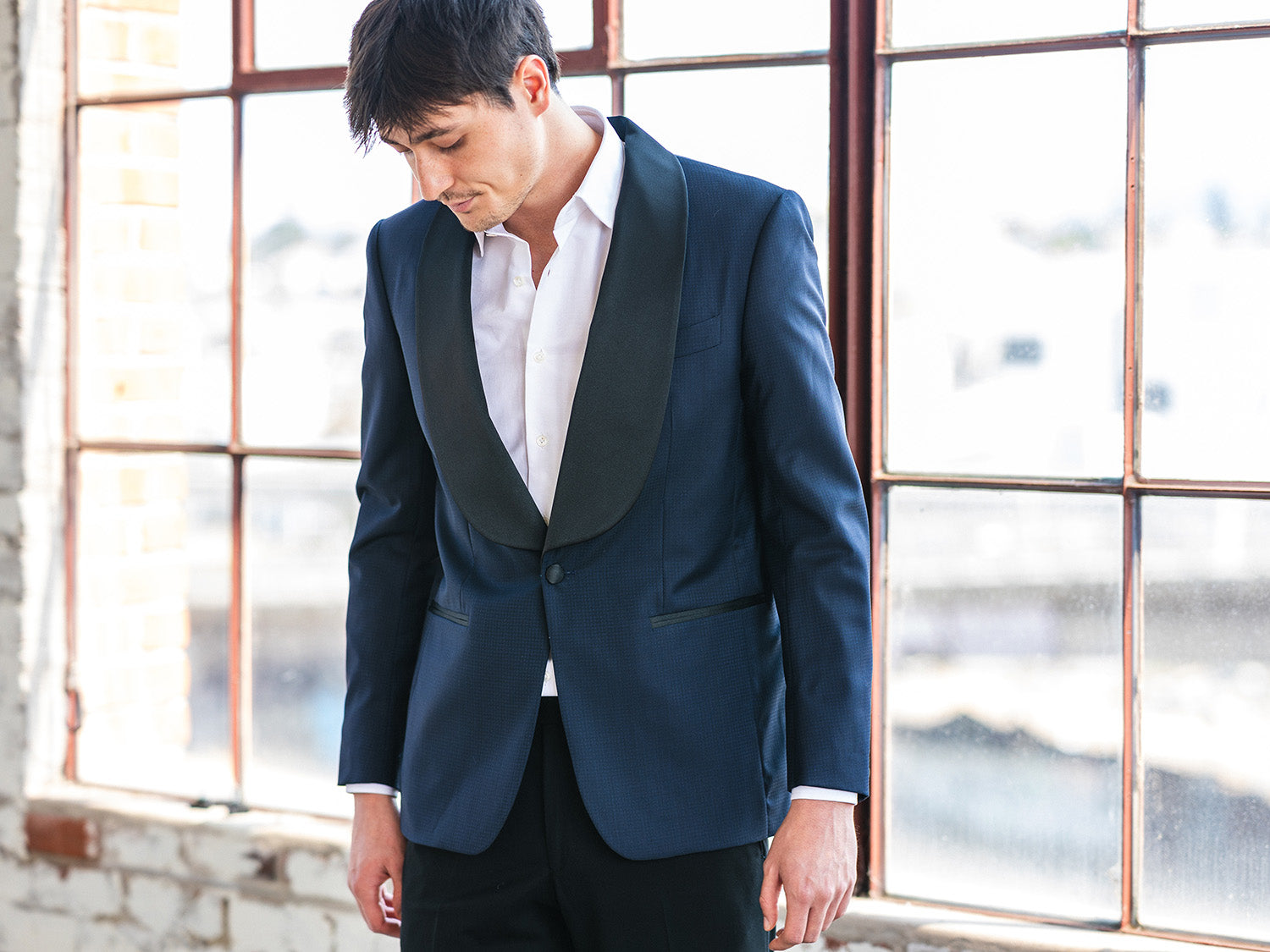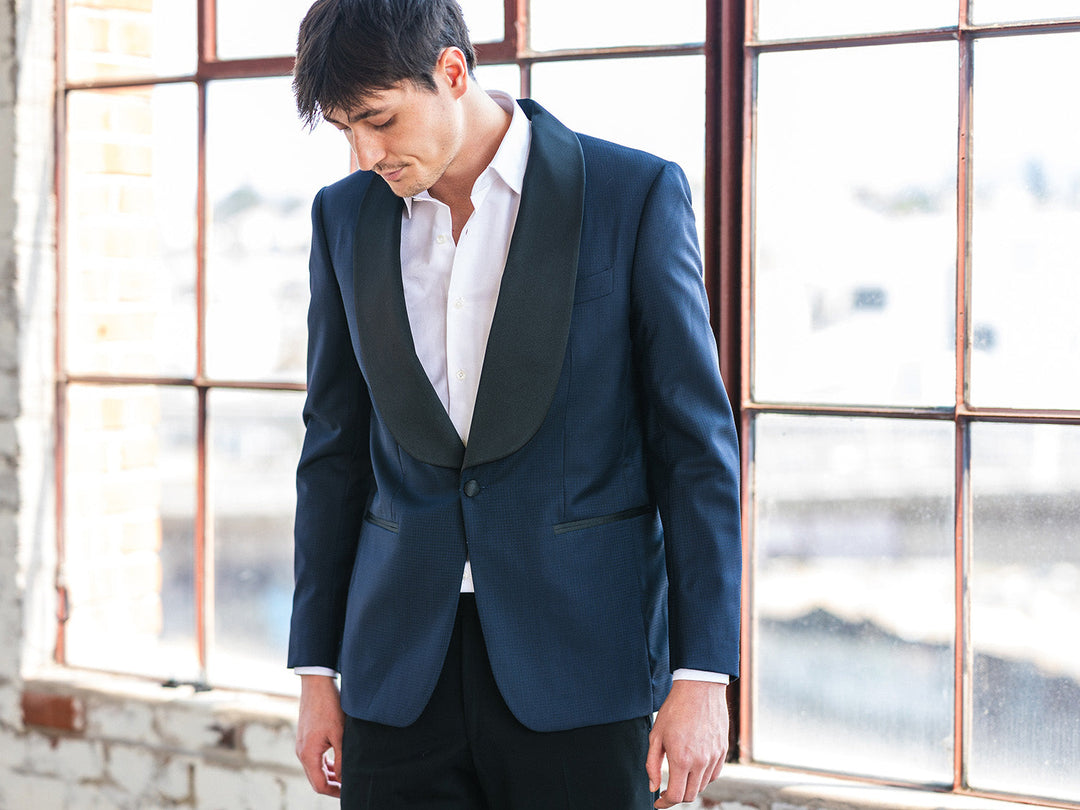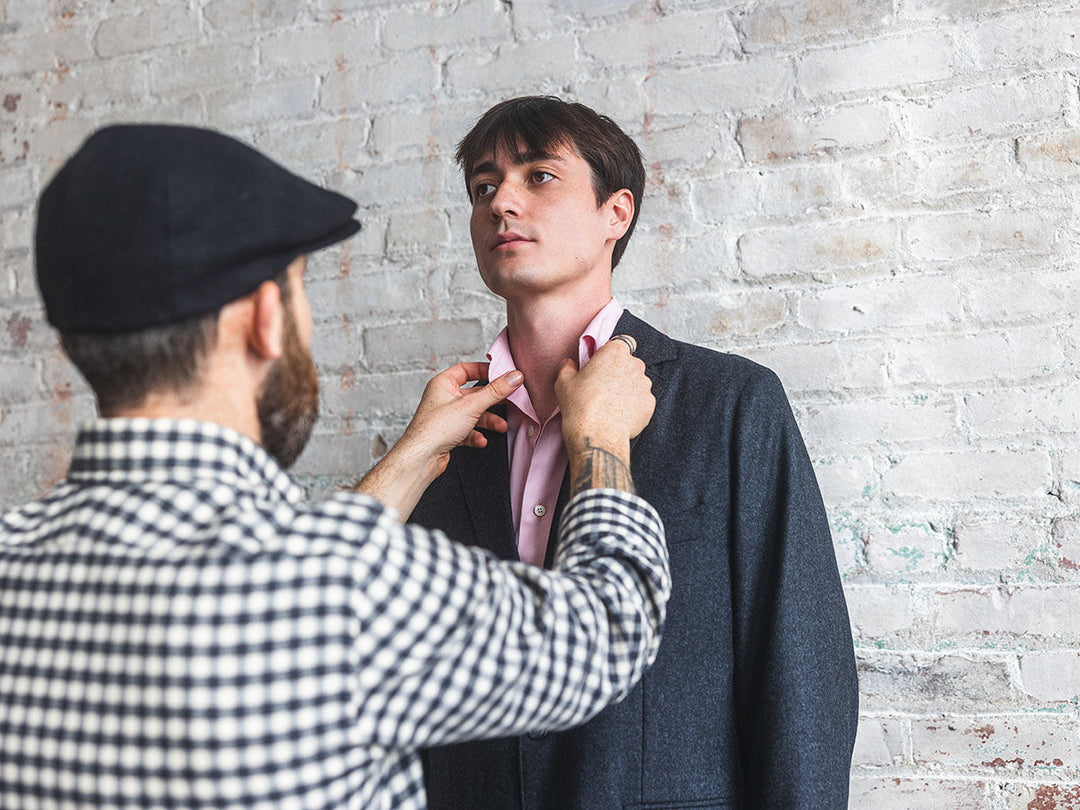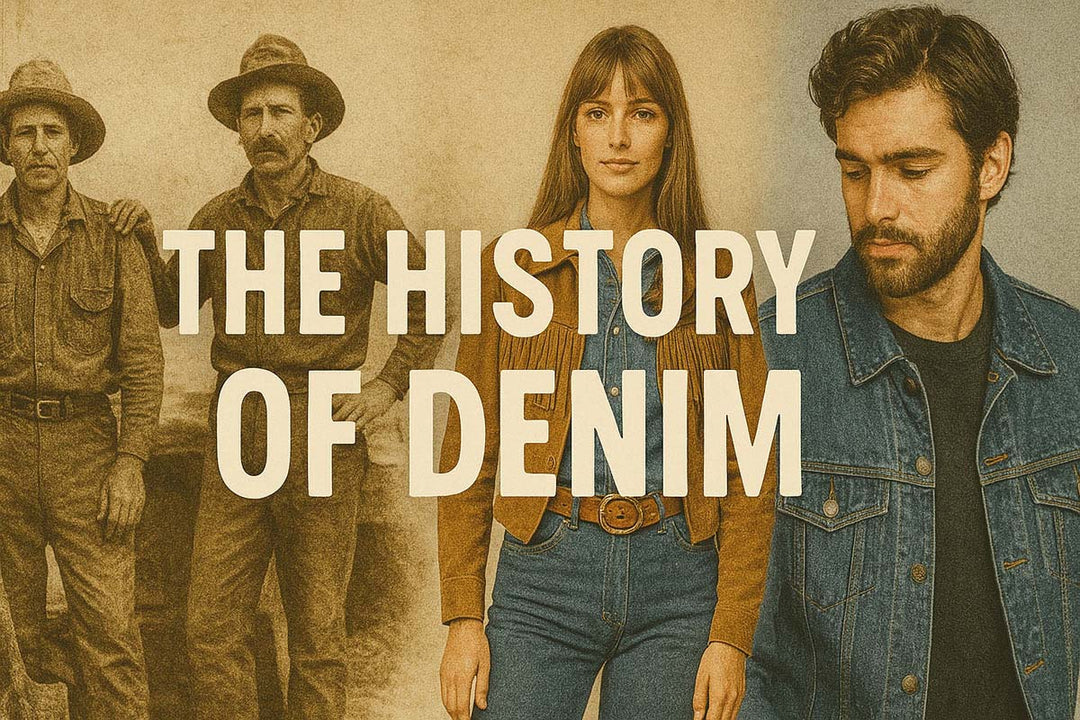This writer’s first-ever bespoke suit is a three-piece in thick green window-checked tweed, woven to fend off the elements on the rain-pummeled Scottish Highlands—this, despite his never having set eyes on a grouse that wasn’t on the side of a whisky bottle.
The Gieves & Hawkes tailor who fitted it recommended that a buttonhole be fixed to the top of one of the lapels as a touch of authenticity—a nod to the lapel’s historical origins. Those roots lie in 17th-century military dress, where lapels could be unfolded and fastened to give the wearer extra protection from the cold.
Nowadays, of course, jacket lapels are far more about aesthetics and styling—which means it’s all the more important to understand their finer nuances and how the three different types fit into your sartorial agenda.
Onwards & Upwards: The Peak Lapel

Extending upward toward the collarbone, the peak iteration is the closest modern echo of the lapel’s original purpose alluded to above: its shape rises high enough to suggest how a jacket or coat might once have closed to cover the wearer’s neck. Because peaked lapels emphasize the width of the shoulders, they became a defining feature of double-breasted suits—which have more military DNA than their single-breasted counterparts—and they remain closely associated with the style today.

Once a defining feature of tailcoats and frock coats, peak lapels are distinctly more conspicuous, assertive and arguably more formal. They add an extra dash of imperious swagger to a tux, as seen in our Trend Slim and Grey Stripe Tuxedo Jackets. And a single- or double-breasted peak lapel suit wouldn’t seem the least bit out of place at the mahogany tables 20 floors up on Wall Street.
Incisive Action: The Notch Lapel
Sewn to the collar at an angle—an effect that has some Brits calling it the “stepped” lapel—the notch lapel crept into English tailoring in the early 20th century. There’s no documented reason for its arrival beyond offering a versatile alternative to the peak.

Its easy compatibility with the relaxed, almost careless style of Ivy Leaguers between the wars helped boost its popularity, but it’s thanks largely to that versatility that the notch lapel is now the closest thing we have to a norm—the standard, in fact, on most single-breasted suit jackets, blazers and sports jackets on both sides of the pond.
It offers no complaint if a plaid casual shirt is worn under it one day and something far starchier the next; it plays nicely with all manner of collars; and it suits any cut and any fabric a tailor’s shears might bring into being.

How comfortably it lends itself to different jacket genres is demonstrated by our own notch lapel repertoire, which ranges from a Silk & Wool Houndstooth Sport Coat to a striking yet formal Blue Huddersfield Fresco Suit to our Aubergine Check Sport Coat. That last piece, in particular, shows that notch lapels—so often deemed the “safe” option—are no enemy of the Italian concept of sprezzatura, or studied carelessness.
A Rounded Approach: The Shawl Collar
The shawl collar—where the collar itself curves downward into a single unbroken sweep to meet its counterpart at the front—is rarely seen outside formal evening wear and knitwear. The latter owes its association to a garment originally created for the 7th Earl of—you guessed it—Cardigan, and based on the uniforms of the Crimean War.

The shawl lapel’s place in evening wear seems to trace back to the rakish, lounge-friendly garment the Brits call the dressing gown (or bathrobe, here in the US). Shorter, hip-length versions were fashioned in velvet, silk, or printed flannel to protect a gentlemen’s club member from spoiling his clothes with ash or smoke while partaking in tobacco treats.

One day in 1865, Edward VII walked into Henry Poole on Savile Row and asked for a shortened version of the tailcoat—essentially a close relative of the smoking jacket. He later wore it at the private country club Tuxedo Park in Orange County, and the shawl collar’s association with formal evening wear—an association that remains prevalent here at Anatoly & Sons—was set in motion.
Finally… A Word on Width
Check out Hugh Laurie—of House fame—playing P.G. Wodehouse’s Bertie Wooster for a fine example of just how voluminous gentlemen’s lapels were in the 1930s. In the slim-fitting 1950s and 1960s, narrow lapels—sometimes just an inch wide—became de rigueur. Then, in late-sixties London, along came Edward Sexton, savior of Savile Row (along with his partner Tommy Nutter) and tailor to The Beatles and The Stones, and lapels that looked like they belonged on overcoats were back on the agenda.

Where does that leave us today? For a single-breasted jacket, balance—and therefore timeless elegance—sits at a lapel width of around 3.5 to 4 inches. Double-breasted lapels need a touch more breadth to look proportionate, which is why a little flamboyance in the form of our Charcoal Slim Double-Breasted Sharkskin Suit or Navy Double-Breasted Pinstripe Suit makes such a strong addition to a wardrobe, helping you stand out (in a good way) on the right occasion. In both cases, the big, bold, beautiful cut of the lapels is elegantly offset by the relatively understated fabric from which the pieces are made.
As for ultra-thin lapels? It’s hard to see how they fit into any notion of timeless elegance, and unlikely—despite fashion’s ebbs and flows—that they ever will.
Perhaps it’s because you could never attach a button and fasten 1.5-inch lapels even if you wanted to. Can form really thrive when function is not just redundant but impossible? Now there’s a sartorial debate to be had—just be sure to invite at least one friend wearing an aviator watch with no dual-time function…

